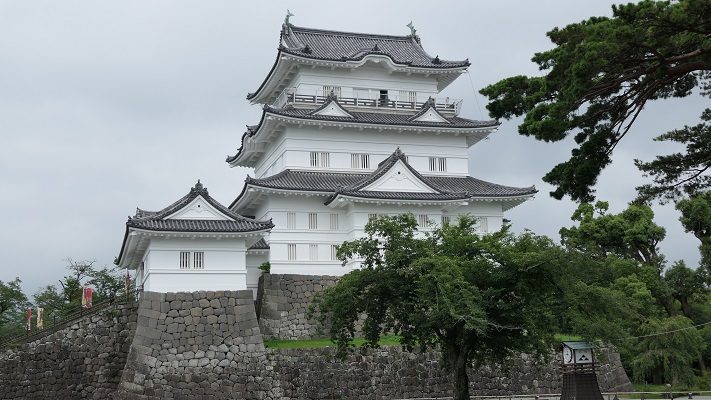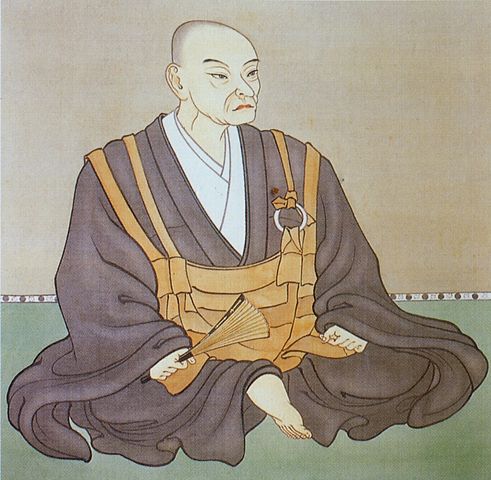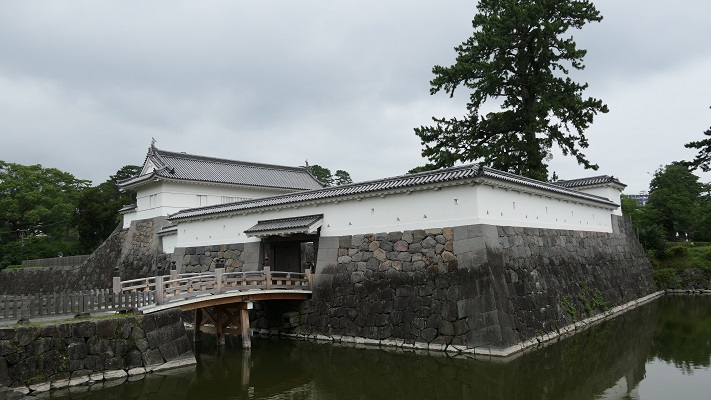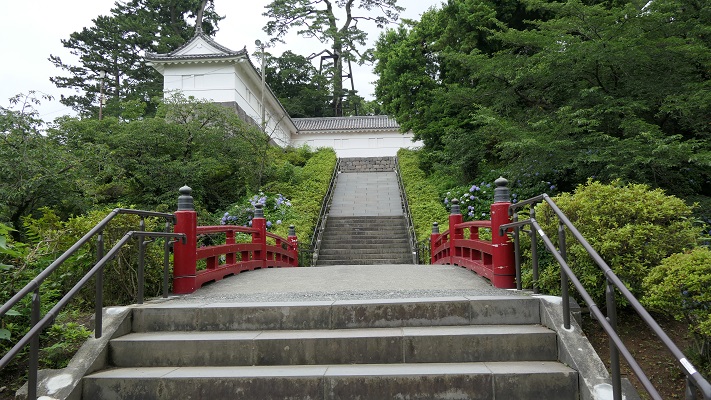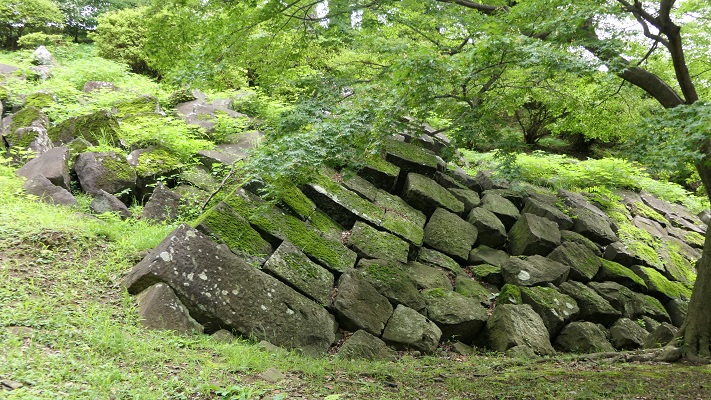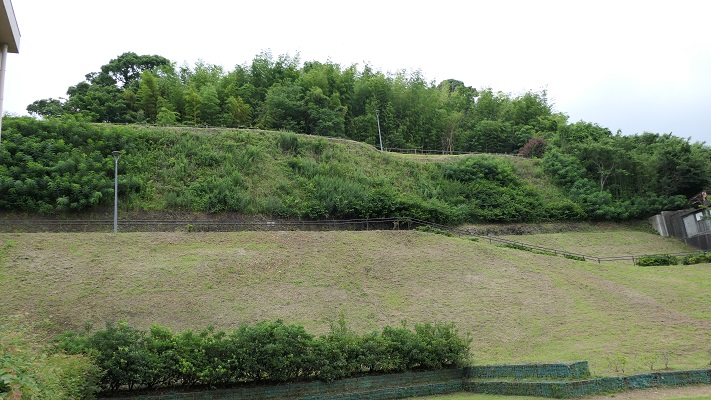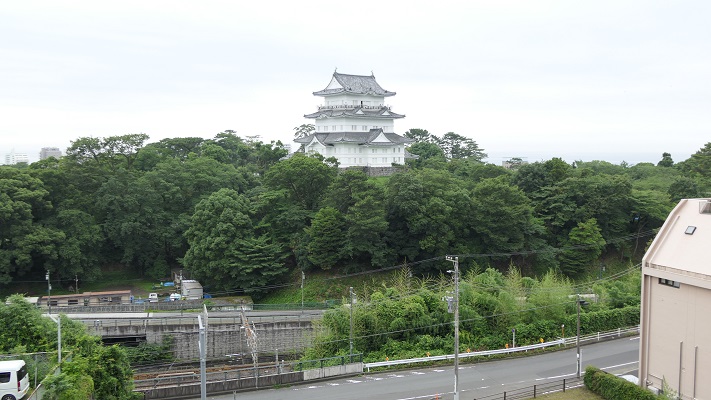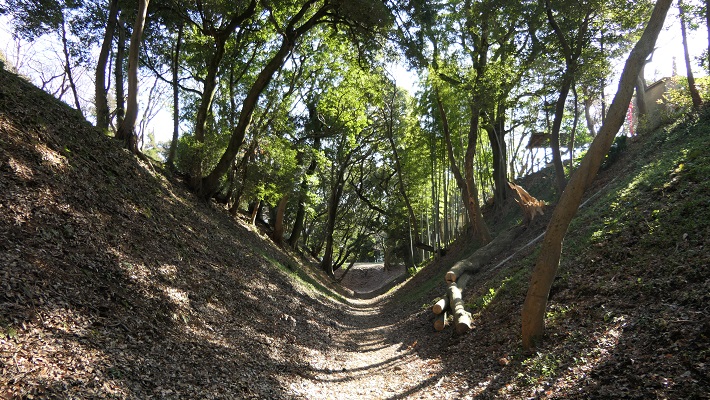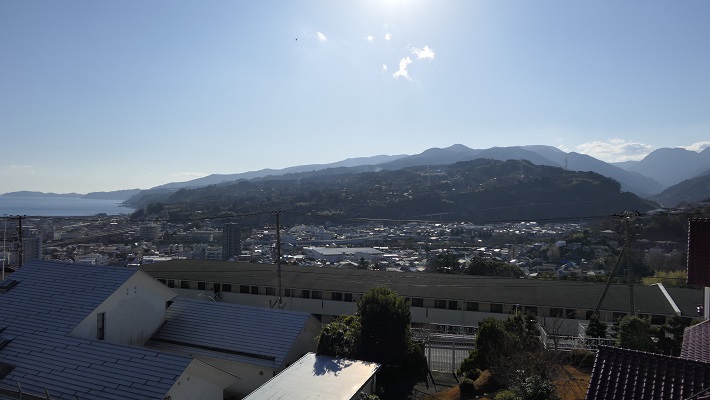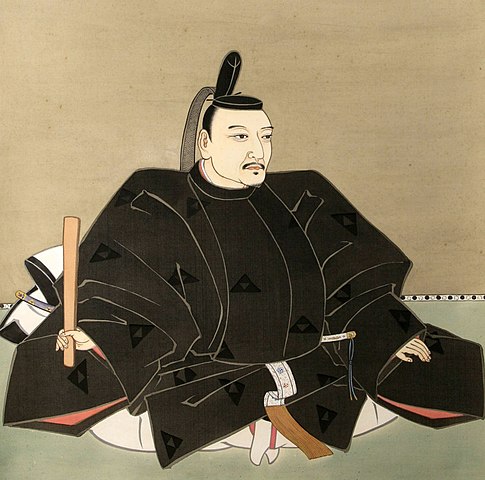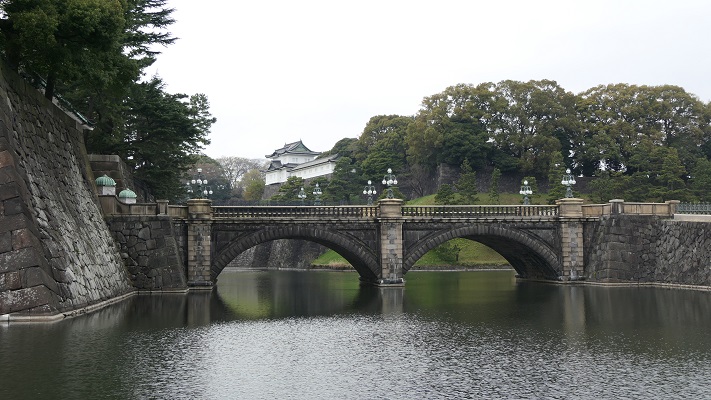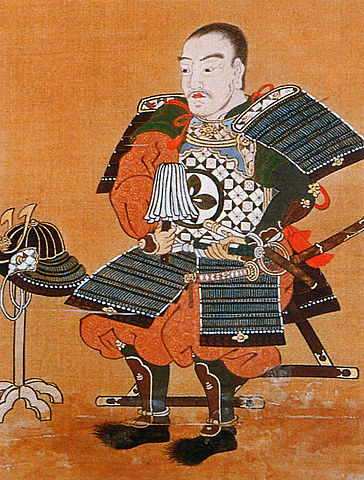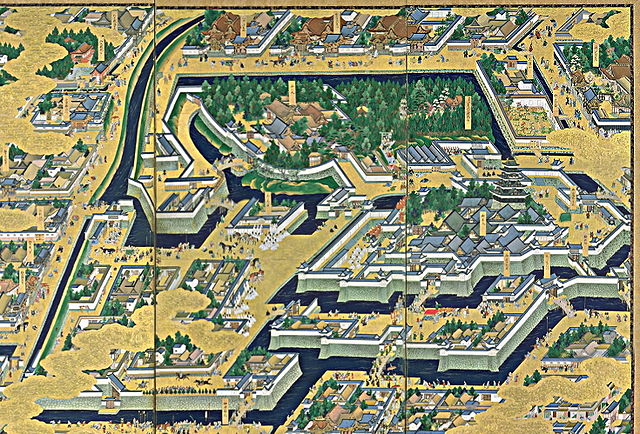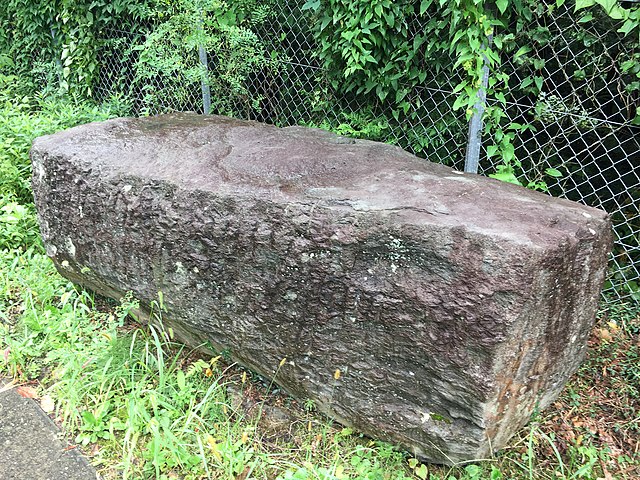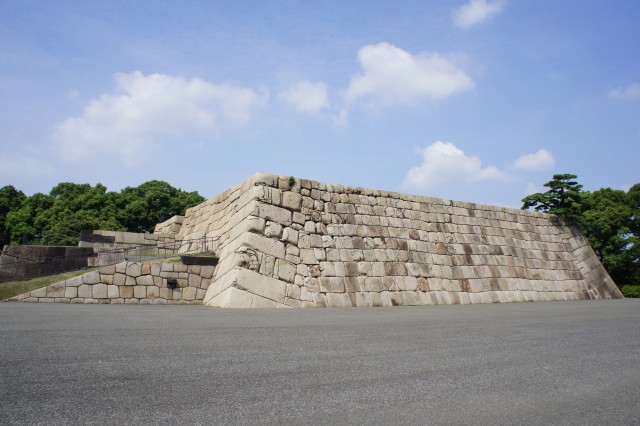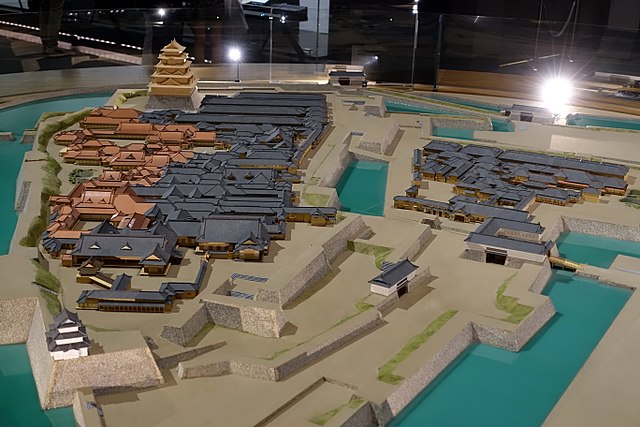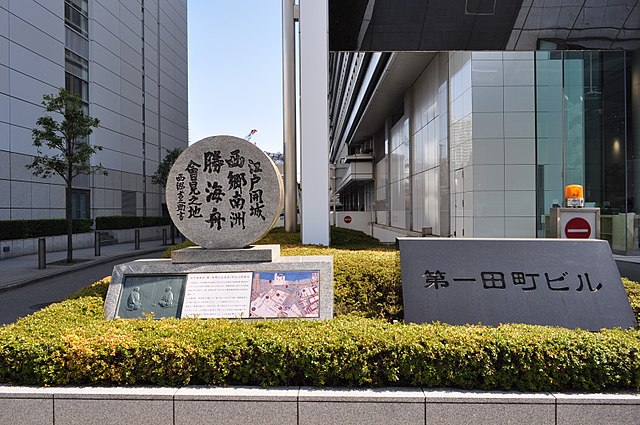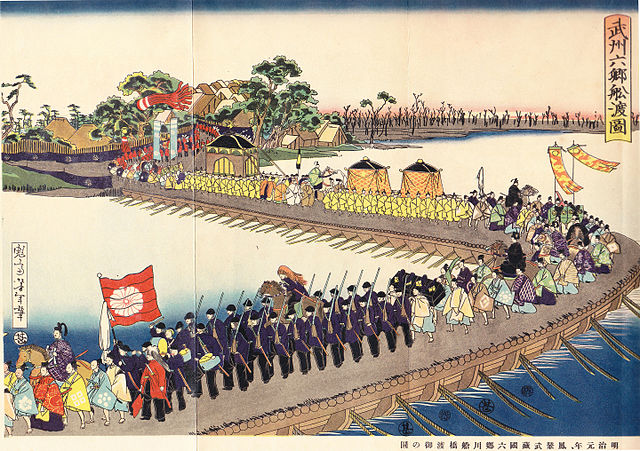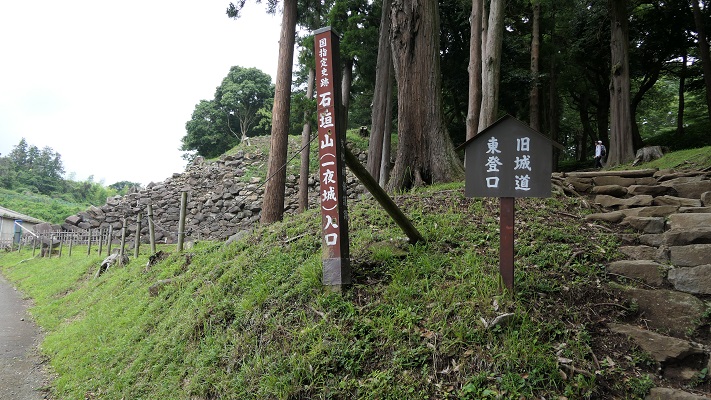
立地と歴史~Location and History
石垣山城には「一夜城」という異名があります。文字通り一夜でできた城という意味です。これは1590年に豊臣秀吉と北条氏の間で起こった小田原城包囲戦に由来します。
Ishigakiyama Castle is nicknamed as “Ichiya-jo” which means a castle built in one night. It comes from an event in Siege of Odawara Castle between Hideyoshi Toyotomi and the Hojo clan in 1590.

小田原にいる北条の西方にある笠懸山の上にこの城が完成したとき、秀吉は配下の者に、一夜のうちに城の周りの木々を全て伐採するよう命じました。翌朝、北条は城が突然現れたと思い、驚愕しました。この話により一夜城と呼ばれるようになったというわけです。しかし、この話は後になって江戸時代の軍記物により広められたものなのです。今でも北条がいた小田原市域からは、この城跡で何か起こればはっきり見ることができます。
When this castle was completed on a mountain called Kasagakeyama, located in the west of Hojo in Odawara, Hideyoshi ordered his men to cut down all the trees around the castle in one night. Hojo was very surprised to see the castle suddenly appear the next morning. The story calls it Ichiya-jo. However, it was spread later by war chronicles in the Edo Period. Even now you can clearly see how it goes in the castle ruins area from Odawara city area where Hojo was.
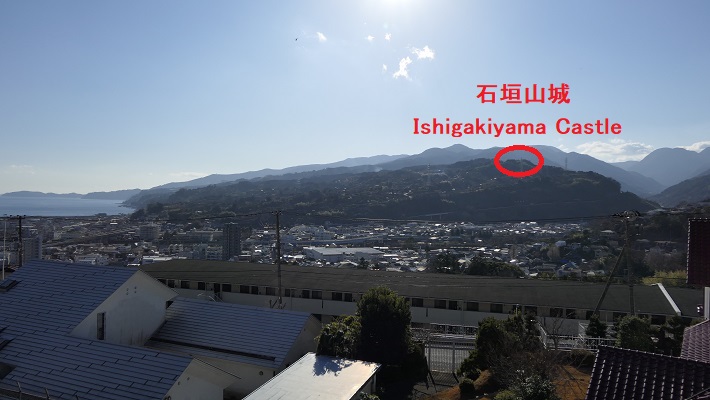
この城にはこのような不可思議な話もありますが、訪れる価値は十分にあります。それは、東日本では初めてとなる総石垣造りの城だからです。それまでは、主に土を使った基礎による城が普通でした。秀吉は最初1590年4月6日から包囲戦のため寺院に滞在しました。そして、すぐに築城を開始し、穴太衆と呼ばれる石垣積みの専門集団も連れてきました。彼は6月26日に本陣として城に移ったので、3ヶ月弱で完成したことになります。当時の正規の城を作る期間としては驚異的でした。
Though the castle has such an unclear story, it is still worth the visit, because it is the first castle made up entirely of stone walls in eastern Japan. Until then, it was common to build castle foundation mainly from soil in the area. Hideyoshi first stayed at a temple for the siege from April 6 in 1590, then started to build the castle right away, bringing the specialists of piling stone walls called Anoushu. He moved to the castle as his stronghold on June 26. That means the castle was built in less than three months. It can be seen as a surprisingly short term to build a formal castle at that time.

歴史家の多くは、この城は秀吉の権威を北条や味方に対して見せつけるものだったと言います。一方、この城はもっと長期の包囲戦に備えたものだったと指摘する人もいます。事実としては、北条は7月5日に降伏してしまいますが、それまではわかりませんでした。古文書には、秀吉側の兵隊は厭戦気味で、兵糧も尽きてきていたとあります。また、包囲戦の後も、工事がまだ続いていたこともわかっています。北条の後に入った徳川氏はしばらく城を使い続けていたようです。包囲戦よりも新しい日付のある天守瓦が発掘されています。その後はいつしか廃城となったようです。
Many historians and writers say the castle demonstrated Hideyoshi’s authority to Hojo and his supporters. Some point out that the castle would be for a longer term siege. The fact was that Hojo surrendered on July 5, but it was uncertain before then. Old documents say Hideyoshi’s soldiers got bored and supplies were getting less. There is another evidence that the construction was going on after the siege. The Tokugawa clan, following Hojo, seemed to use the castle for a while. Roof tiles for the Tenshu keep with newer dates than the siege were found by excavation. After that it seemed to be abandoned for sometime.
特徴~Features
今でも、この城跡にこんなにも巨石があるのに驚かれるかもしれません。その当時の人たちにとっては尚更だったでしょう。観光客の人たちは大体駐車場から、南曲輪を通り過ぎて二の丸に登っていきます。道すがら半分崩れた石垣が目に入ってきます。粗野ながら威風堂々としています。
Even now, you may be surprised to see there are the castle ruins with such large stones, to say nothing of the people at that time. Visitors usually go up from the parking area to the Ninomaru enclosure through the South enclosure. You can see a lot of half collapsing stone walls alongside. They look rough but regal.
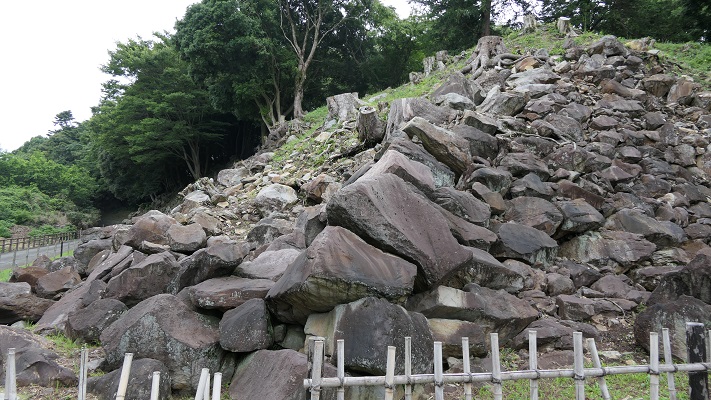
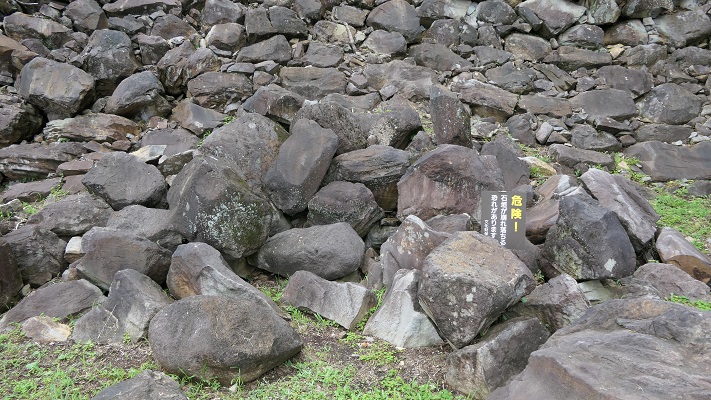
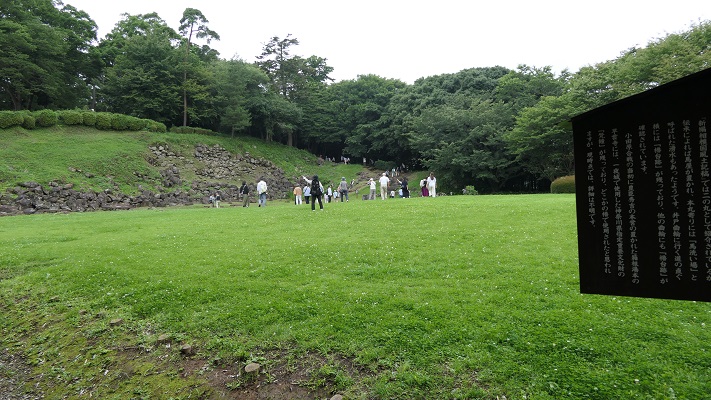
井戸があったことに由来する井戸曲輪は是非見ていただきたいです。井戸の円錐の形に沿って自然石を全面的に積み上げてあります。その様はとても美しく、穴太衆の高度な技術が見て取れます。
Don’t miss to see Ido enclosure which was used for the well. It is totally covered with piled natural stones along the corn shape of the well. It is very beautiful and shows the high level technique of Anoushu.

二の丸の方に戻れば、本丸の北門跡の方に入っていけます。本丸には秀吉の御殿があり、その周辺では茶会が開かれていたそうです。ここからは、小田原城を含む小田原市域一帯を見渡せます。秀吉の本陣として相応しい場所でした。
You can enter the North Gate Ruins of the Honmaru enclosure if you turn back to Ninomaru. There was Hideyoshi’s palace where he is said to hold a tea ceremony around. You can see the whole view of Odawara City including Odawara Castle. It served as Hideyoshi’s stronghold.



天守跡は本丸のとなりにありますが、現在はあまりそのように見えません。その石垣は、関東大震災のときに崩れてしまったようです。最後は大手門跡を通って、東口にたどり着きます。
The Tenshu ruins are next to Honmaru, but they don’t look so now. Their stone walls seemed to collapse due to Great Kanto Earthquakes. Lastly you can go down through the Main Gate Ruins and reach the East Entrance.
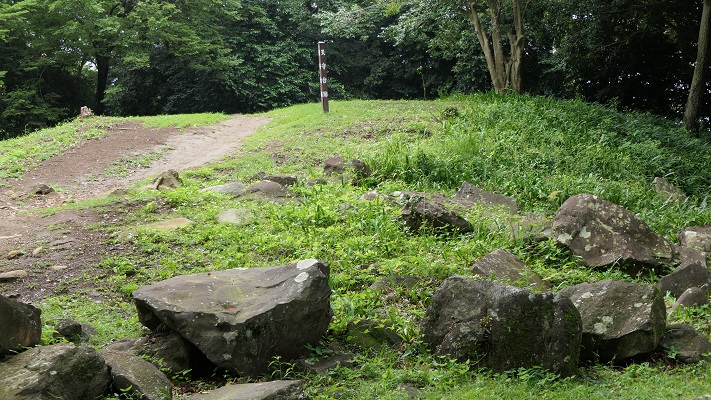
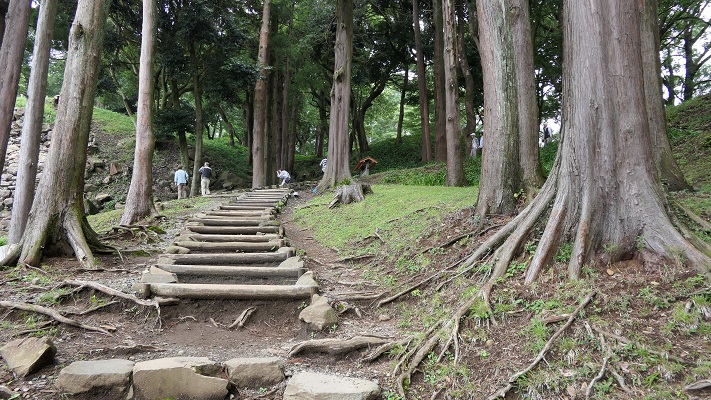
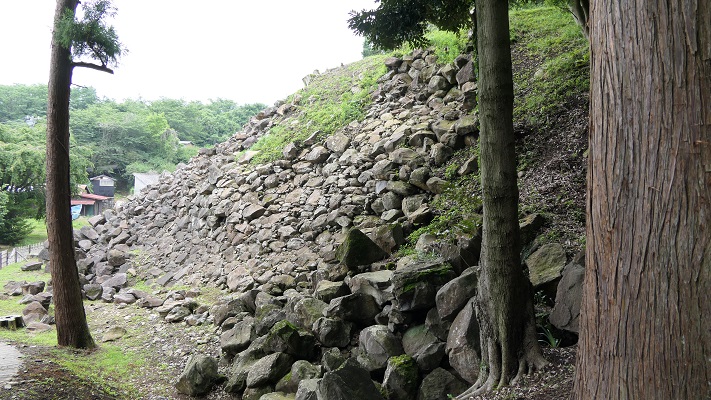
その後~Later Life
江戸時代の18世紀初期、小田原藩の有浦氏が城跡を調査し、遺跡の図面を残しました。この図面によれば、石垣はまだ良好に残っていました。しかし、残念ながら1923年の関東大震災で多くが破壊されました。城跡は1959年に国の史跡に指定されました。
In the first 18th century in the Edo Period, the Ariura clan of the Odawara Domain investigated the castle ruins and left the drawings of the ruins. According to the drawings, the stone walls still kept well. But unfortunately Great Kanto Earthquakes in 1923 broke many of them. They were designated as a National Historic Site in 1959.
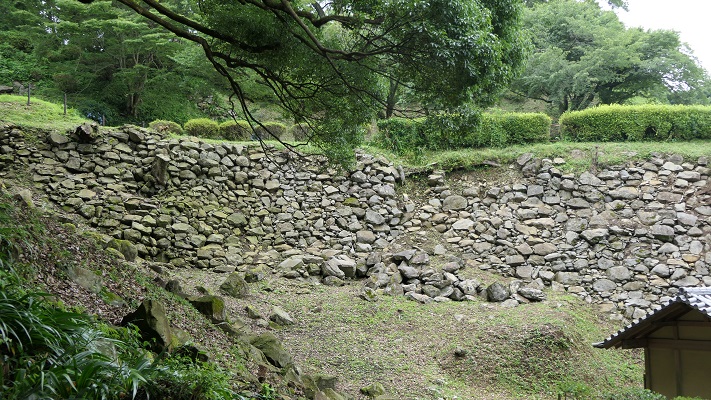
私の感想~My Impression
私が思うに、この城の素晴らしいことの一つは、その「石垣山」という名前です。単に石垣の城という意味ですが、その当時の人たちがどんなに驚いたかがわかります。この城は相当な衝撃を与えたのでしょう。それで山の名前が笠懸山から石垣山に変わったのです。この新しい名前は遅くとも江戸中期には一般に広まりました。恐らく一夜城伝説と組み合わされて定着したのでしょう。
I think one of the greatest things of the castle is its name “Ishigakiyama”. It just means a stone walls castle. It shows how surprisingly people at that time felt. The castle must have had a big impact on them. That’s why the name of the mountain was changed from Kasagakeyama to Ishigakiyama. The new name spread to the public at the latest in the mid Edo Period. It was probably combined with the Ichiya-jo story, and have fixed.
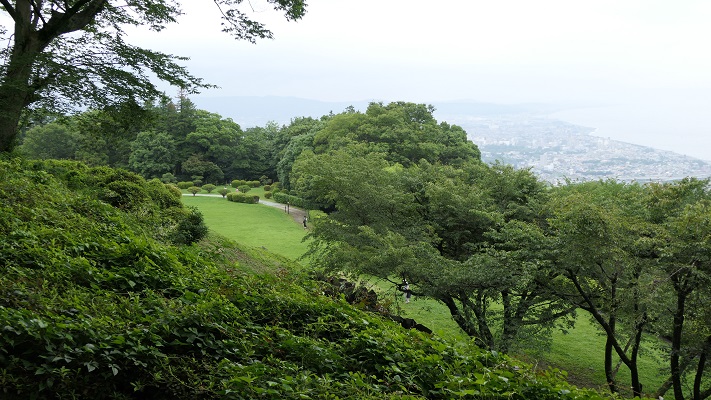
ここに行くには~How to get There
石垣山城跡に行くには車が便利です。西湘バイパスの小田原ICか小田原厚木道路西小田原ICから数キロの範囲です。電車を使う場合は、JR早川駅から歩いて約40~50分かかります。急坂を登っていく必要がありますが、それも面白いかもしれません。
東京から早川駅まで:東海道新幹線に乗って小田原まで行き、東海道線に乗り換えてください。
It is useful to access Ishigakiyama Castle Ruins by car. It is several kilometers from the Odawara IC on Seishou Bypass or the Odawara-Nishi IC on Odawara-Atsugi Road. When using train, it takes about 40~50 minutes on foot from JR Hayakawa Station. It needs to climb up a steep slope, but it may be interesting.
From Tokyo to Hayakawa Station: Take the Tokaido Shinkansen super express to Odawara, then transfer to Tokaido local line.
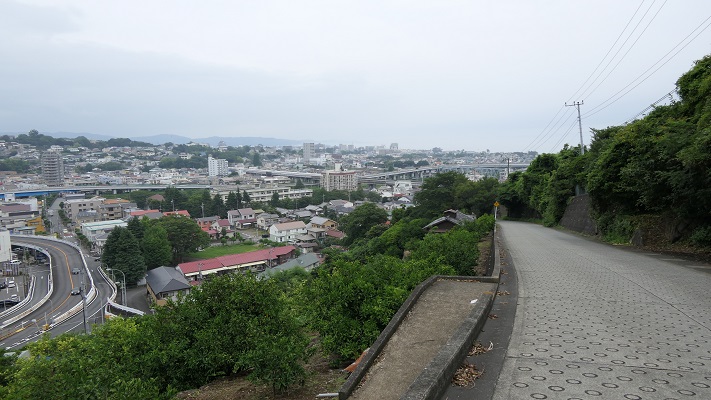
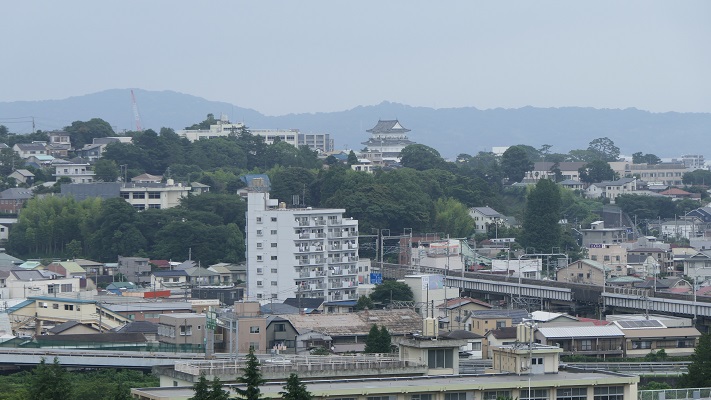
リンク、参考情報~Links and References
・石垣山一夜城、小田原市オフィシャルサイト~Odawara City Official Website
・石垣山一夜城、小田原城街歩きガイド(Only Japanese)
・「関東の名城を歩く 南関東編/峰岸純夫、齋藤慎一編」吉川弘文館(Japanese Book)
・「よみがえる日本の城2」学研(Japanese Book)

